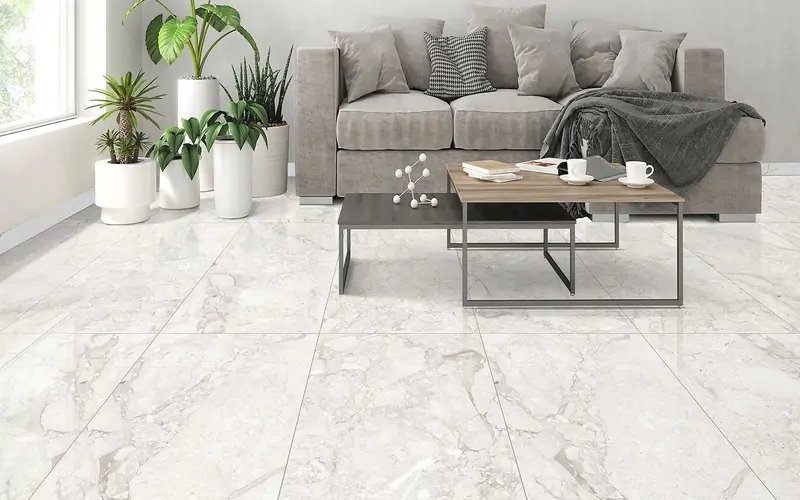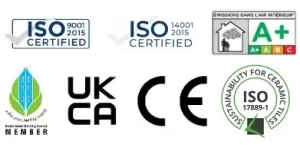Browse products by
Filter By Type
Filter By Finish
Filter By Look
Filter By Application
Filter By Type
Filter By Look
Filter By Application
Filter By Size
Top 5 Ways to Finish Tile Edges
Aug 2022
Working on giving your house a new look with the latest tiles design? Well, everyone knows the attention and time one should give for a complete look at your design. But one activity that many ignore includes giving a finishing touch to the tile edging and corners. Merely focusing on the preparations and planning isn’t enough for giving the house that perfect look. As when it comes to tiling, focusing on the edges and corners is very important to avoid any kind of damage or unfinished look.
How to finish the rough edges of the floor tiles or wall tiles at the time of installation is one of the various challenges the homeowners face for a well-finished project. Most of the tiles need bullnose pieces for coordinating the tile lines for matching the different tile sizes. While on the other hand, the new tiles don’t have the bullnose which can be a little discouraging at the time of selection or laying.
When it comes to the finishing of the best vitrified tiles, it is important to focus on the laying of the tiles. Clients surely look for a cleaner and smooth finishing of the tile edges. And hence, here are some professional ways or methods for having finished tile edges.
#1 Paint the Tile Edges
This is one of the fastest methods of finishing the rough edges of the tiles. All you have to do is simply paint the edges and corners of the tiles for matching them with the surrounding tiles. You can use any enamel paint which is oil-based for painting the edges. You can also select water-based colors for coloring the edges or corners. Again, when using the paint on the edges and corners, make sure you cover the corners of the tile with painter’s tape so that the color doesn’t spoil the tiles. Again, using a thin painting brush is also recommended to ensure there is no messing on the tiles. Lastly, make sure you use two coatings of the enamel color, particularly to cover the dark edges or corners of the tiles.
#2 Use the Caulk for complete finishing
When the caulk is used for finishing the tile edges, it not only protects the tiles from cracking but also helps in the prevention of moisture building. Again, caulk is one of the easiest and cheapest ways of finishing the GVT tiles edge. As caulk gives waterproof sealing to the edges and corners of the tiles, it is widely used in areas like bathrooms, kitchens, etc. However, while selecting the caulk for the tile edges, make sure the color of the caulk nearly matches the color of the grout. Apply a thin layer or line of caulk for water-tight sealing of the grout or edges. For uneven areas, give a touch-up of wall paint to the caulk. Make sure you allow the caulk to dry completely before exposing it to moisture. This may take around 1 to 10 days depending on the formula used for making the caulk.
#3 Finishing the tile edges with trim pieces
Trim pieces are used in the form of bullnose tiles for giving the tiles a finishing touch. Also termed trim tiles, it is a set of specialized PGVT tiles that are used for smoothing the edges. They are used for hiding the rough areas of the tiles or unfinished areas. No doubt, this process can be costly compared to the standard tiling pieces, it is still a convenient way of finishing the tile edges or corners, particularly from the tiles to the wall. While selecting the bullnose tiles, make sure to match the thickness of the trim tile with the other tiles. You can select matching trim tiles or complementary trim tiles for the job. Before placing the tiles, count on the location and area of trim tile application for learning the number of tiles you would require. You can also use a pencil or mask tape for marking the edges that need the trim tiles.
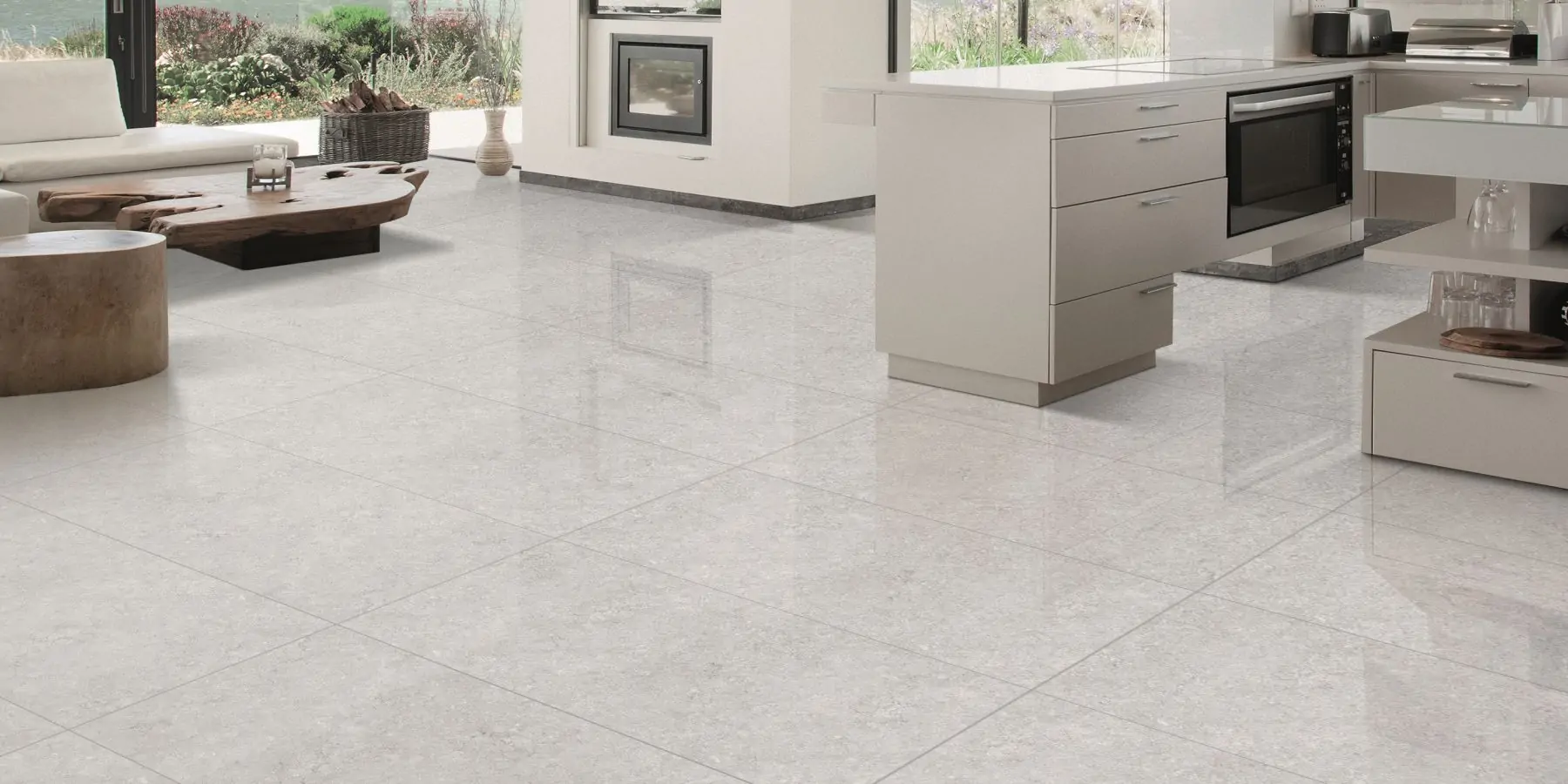
#4 Rail Molding for finishing tile edging
Coordinated tile or rail molding is readily available in porcelain and natural stone. Their texture is generally decorative and thin which makes it easier for developing a transition between the different tile types or from the tiles to the drywall. The rail moldings provide a clean and consistent transition for a finishing touch to the house that gives a beautiful look. But what if the glazed vitrified tiles you have selected don’t come with any kind of rail molding? Don’t worry. In such a case, you can select a rail molding that matches closely to the tiles. Another option is to select contrast tiles for a glamourous look to the area.
#5 Metal Edges for finishing
When talking about metal edges, it gives you a variety of hues, designs, and finishes to select from. The metal edges can be used in both indoor as well as outdoor finishing for tile edges including showers, accent walls, and flooring stairs. It gives a clean as well as contemporary transition to any kind of surface. As they give a nice appearance to the complete outlook, it is getting immense popularity. Many times the house owners also select the color of the metal edge according to the color of the show head or even the sink faucet. Hence, the metal edges give an elegant feel to the entire look of the house.
According to the experts from Lavish Ceramics, while planning for a new tile installation, it is important to focus on things like a smooth transition from the wall to the tiles, grout application, grout lines, ceilings, and various other surfaces which are important for the project. Don’t worry if the polished glazed vitrified tiles you have selected don’t have any matching option or method you have selected. You can always go with other options like natural marble stone rail molding, modern metal edge, etc., or even design your own customized bullnose edge for giving a personalized touch to your finishing.
Similar Articles
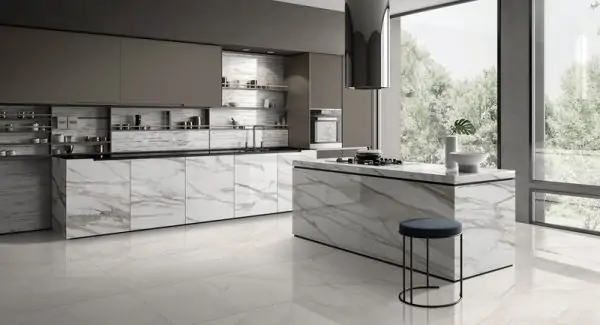
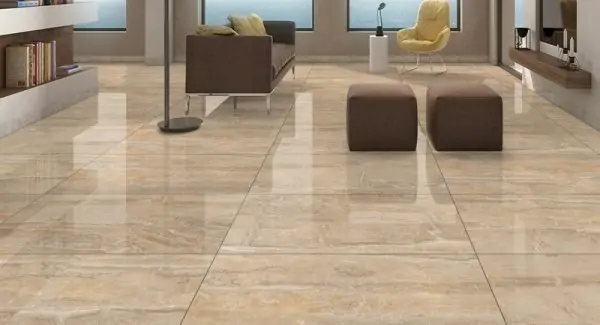
That which is unique is always rare and special, so is with the finesse of Lavish tiles. Lavish is synonymous with excellent quality tiles that define the beauty of a well tiled space. One of the largest manufacturer and exporter of ceramic tiles, wall tiles and floor tiles, double charge vitrified tiles, polished glazed vitrified tiles, glazed vitrified tiles and digital tiles, Lavish is famous for adding that sense of grandeur and splendor through sheer product quality.







